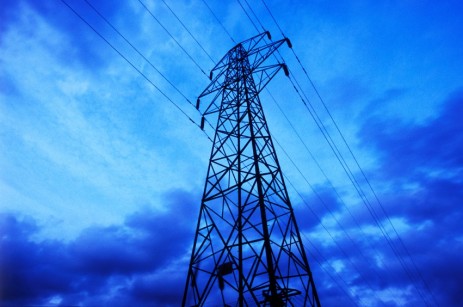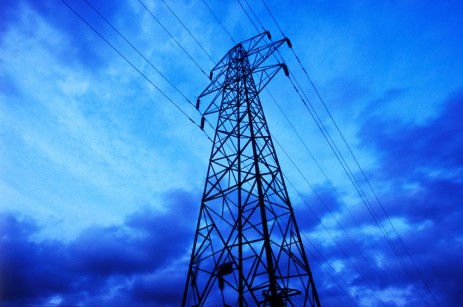 A holistic, renewable electricity system would generate millions of good jobs.Cross-posted from New Deal 2.0.
A holistic, renewable electricity system would generate millions of good jobs.Cross-posted from New Deal 2.0.
When the Roosevelt Administration designed the Tennessee Valley Authority (TVA), it was designed as a set of mutually self-reinforcing parts, as a holistic system — including electrification, flood control, soil conservation, fertilizer production, and plenty of good, long-term jobs. The same concept of mutual gain applies to renewable energy — at a regional, and even national level, an economy running on solar, wind, and geothermal energy would constitute a system, creating more than the sum of its parts.
By building dams, the TVA both controlled floods and provided electricity. By teaching farmers about soil erosion and good soil conservation practices, rains stopped turning into the floods that occur when soil is poorly maintained. By controlling floods, agriculture became more dependable, and it became possible to set up industries such as fertilizer manufacture, whose output was then used to strengthen the farming economy. With a strong farming system, the commercial sector expanded, using the electricity provided by the dams — which were made more reliable because there was less flooding. These relationships are examples of positive feedback loops, that is, by increasing something (like electricity) you increase something else (like manufacturing) that then loops back to increase the first set of factors (in this case, by enriching the region).
In just the same way, by designing a national wind, solar, and geothermal system, the benefits of each individual piece of equipment are increased, and those benefits reverberate within the wider economy, looping back to support the renewable system. One of the common criticisms of renewable energy is that it is intermittent — that is, the wind doesn’t always blow, and at night the sun doesn’t shine. However, as Professor Mark Jacobson of Stanford University has been arguing, since the wind is always blowing someplace in the continental United States, if you design a regional or even national system that places wind turbines in areas with different wind patterns, the output of power becomes reliable. In fact, an interconnected system could provide at least 33 percent of a wind system as baseload power, that is, you would be confident that at least one third of your power needs were provided for by wind, a function now filled by coal, natural gas, and nuclear energy.
But wind could be just one part of a national renewable energy system. Concentrated solar power (CSP), uses large arrays of mirrors (mostly in the desert) to concentrate energy on a tower that then creates steam that drives an electricity-generating turbine. The big advantage of CSP is that it can store much of this heat in things like molten salt. At night the CSP plant can use that heat to continue to generate electricity. As Joe Romm points out in an article about CSP, “Solar thermal plants covering the equivalent of a 92-by-92-mile square grid in the Southwest could generate electricity for the entire United States.” Paired with an Interstate Wind System, the benefits would probably increase — by the time the stored heat in a CSP ran out, it would be late enough at night that the wind system could provide all of the remaining electric needs of the country.
There are other storage technologies that could banish intermittency. The sodium-sulfur battery, which can be the size of a house, could be used to store excess energy if too much wind is blowing, or to store electricity for times when the wind isn’t blowing enough. There are newer sodium-sulfur batteries that are more appropriate for storage at the building level, adding a whole new level of flexibility to a national renewable system.
Now add solar panels and solar hot water heaters on top of buildings to the national design. Make those buildings more and more energy-sipping by retrofitting them to retain heat in the winter and cool air in the summer, and we make the system even more resilient. Solar panels and hot water heaters are most efficient at the height of the day, when air conditioning needs often bog down an entire electric system (and can sometimes lead to blackouts). Much of the current electric system is composed of what is known as peak load generators, usually fueled by natural gas. By using solar panels and hot water heaters, and insulating buildings, we could eventually replace “peak” generators — but only if decentralized building energy systems are combined with a national system, one centered on technologies such as wind and CSP.
Building-based geothermal energy can also add to the virtuous cycles within a renewable energy system. The least well-known clean energy source, geothermal heat pumps (GHP), use the fact that the temperature of the ground, even 10 feet deep, stays at a constant temperature of 50 to 60 degrees throughout the year. Since heating the air and water in buildings uses about one-third of both our electricity and natural gas, and since coal-fired plants provide 50 percent of our electricity, we could shut down all of our coal plants simply by installing GHPs under all of our buildings to fulfill their heating and cooling needs.
But of course we don’t have to rely on any single renewable technology to make our electrical system carbon-and-pollution-free. The beauty of wind, solar, and geothermal, used together, is that each one complements the other. Wind can provide a baseload, constant supply, while geothermal heat pumps and solar water heaters can decrease the need for that baseload power. CSP can help in the most energy-intensive part of the day, while solar panels and efficient buildings can be used to take the “peak” out of “peak power”. Large batteries and CSP heat storage can be used to smooth out any remaining problems with intermittency.
The final piece of the renewable puzzle is to create a national system to transmit clean electricity from one coast to the other. Currently, our national electric grid is in mis
erable shape; but Portugal just rebuilt their electric grid to accommodate renewable electricity — so why can’t we?
Obviously, we have a challenging political environment, to say the least. Roosevelt wanted to establish an entire network of regional authorities around the country, modeled on the TVA, and he couldn’t prevail in Congress. But we have to start somewhere, and the place to start is to at least understand and have a public conversation about the potentialities of a holistic, renewable electricity system. I’d bet that wide public interest in a program that would generate millions of new, good jobs, and provide reliable clean electricity, would be something that could change political calculations in a hurry.



